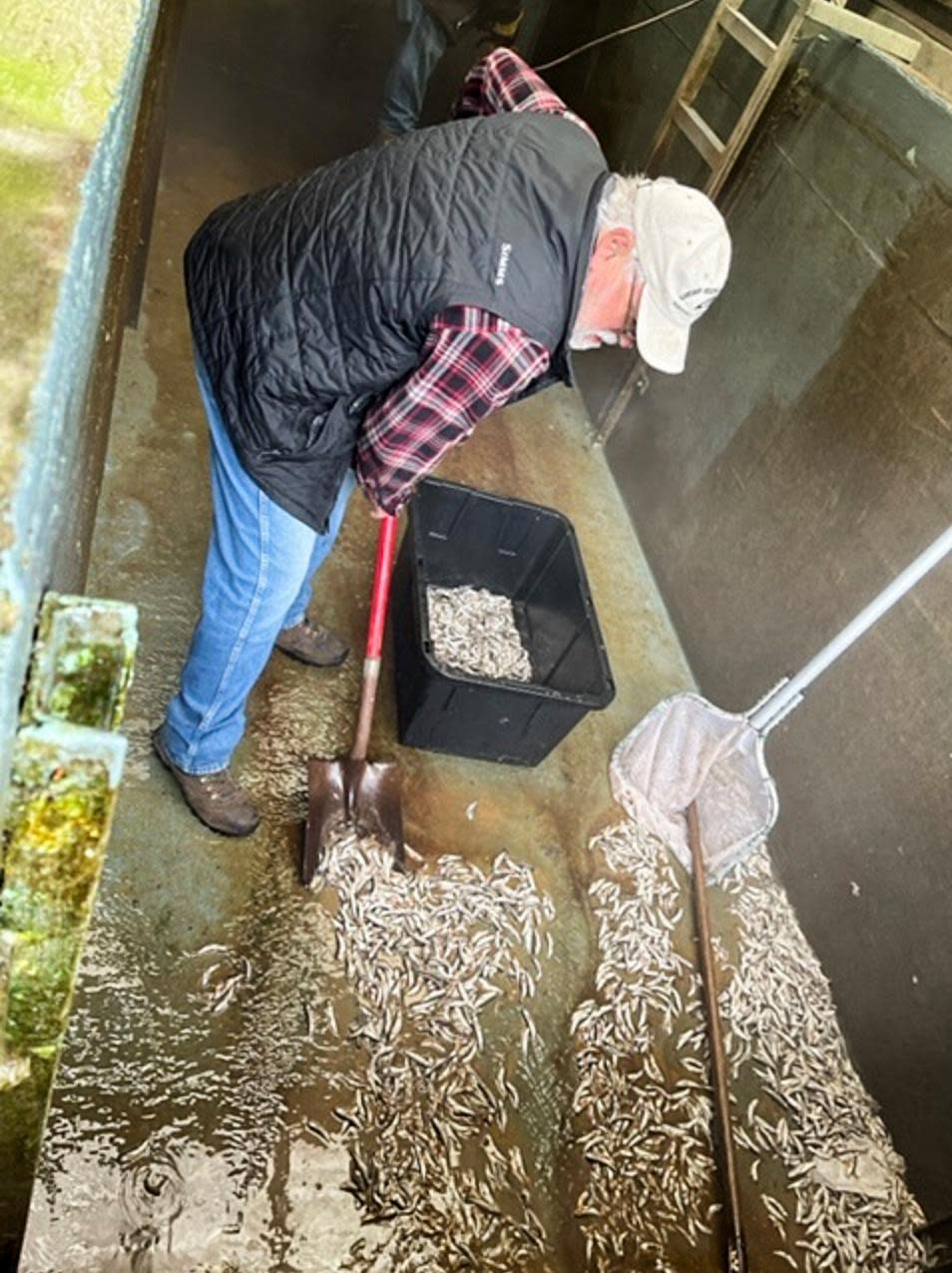Man allegedly pours bleach into Oregon hatchery tank and kills 18,000 salmon

Nearly 200 programs to raise baby salmon in a controlled environment dot the rivers in Oregon, holding them before releasing them into the wild to live out their life cycle. Last week, a man broke into the Winchester Bay Salmon Trout Enhancement Program (Step) and poured bleach into a Chinook salmon tank, killing about 18,000 fish.
Authorities arrested 20-year-old Joshua Alexander Heckathorn, a resident of Gardiner, Oregon, on 23 April, a day after the chemicals were dumped into one of the hatchery rearing ponds. He told law enforcement officials he had visited a storage area the day before and picked up a bottle of bleach, according to a Facebook post by the Douglas county sheriff’s office. Heckathorn was arrested and booked into the Douglas county jail on Tuesday for second-degree burglary, criminal trespass and criminal mischief.
Related: Thousands of young salmon survive Oregon truck crash by dropping into nearby creek
The maximum penalty for poaching Chinook salmon – a species that is protected under the endangered species act – is $750 per fish. If officials assessed fines for every salmon killed, Heckathorn could be asked to pay nearly $14m, state fish and wildlife officials noted, adding that “the case represents a significant loss to the Step program”, a non-profit volunteer group dedicated to raising Chinook salmon for wildlife purposes.
Volunteers drained the pond and removed the dead fish, which have been frozen and taken to Oregon state police as evidence.
“What would possess someone to do something like this?” wrote the hatchery in a Facebook post, adding that the young fish, returning from the ocean as adults in three to four years, would have added 200–400 fully grown salmon available for harvest for fishers, generating much-needed revenue in local economies.
The three- to four-inch-long salmon smolt were supposed to be released in June into the lower Umpqua River, and would eventually make their way to Alaska. Chinook salmon are Oregon’s state fish, and they hatch in freshwater streams and grow there for a year before making the journey to the ocean. Chinook spend between one and five years in the ocean before using their sense of smell to return to their home rivers to spawn and die. They are the largest of the Pacific salmon, and typically grow up to 25lbs, though some have clocked in at 100lbs.
Salmon have already gone extinct in 40% of their historical range, mostly due to human development: what once were rivers and streams are now cities and roads in the estuaries of the Pacific north-west. Their decline affects fishers and Indigenous groups, but also the resident killer whales, who eat only salmon. Environmental groups have pinpointed removing dams and reducing the amount of fish that humans can catch as potential ways to help the species continue to survive.
This isn’t the first time Oregon’s hatchery fish have faced danger. Last year, 160,000 rainbow trout were killed in three hatcheries after they were infected with a new parasite. Workers raced to give the fish antibiotics, but they didn’t respond; workers wanted to stop the parasite from spreading further into wild fish in Oregon waters.
Last month, hundreds of thousands of newly hatched Chinook salmon in the Klamath River died due to “"gas bubble disease”, caused by changes in water pressure. The largest dam-removal project in US history is taking place along the river, the result of many years of pressure by tribes, fishers and environmental groups to return the river to a more natural state.
The hatchery still has three other tanks of fish that are nearly a year old, numbering 60,000, and officials plan to release them in a few months to face the oceans and a challenging future.
